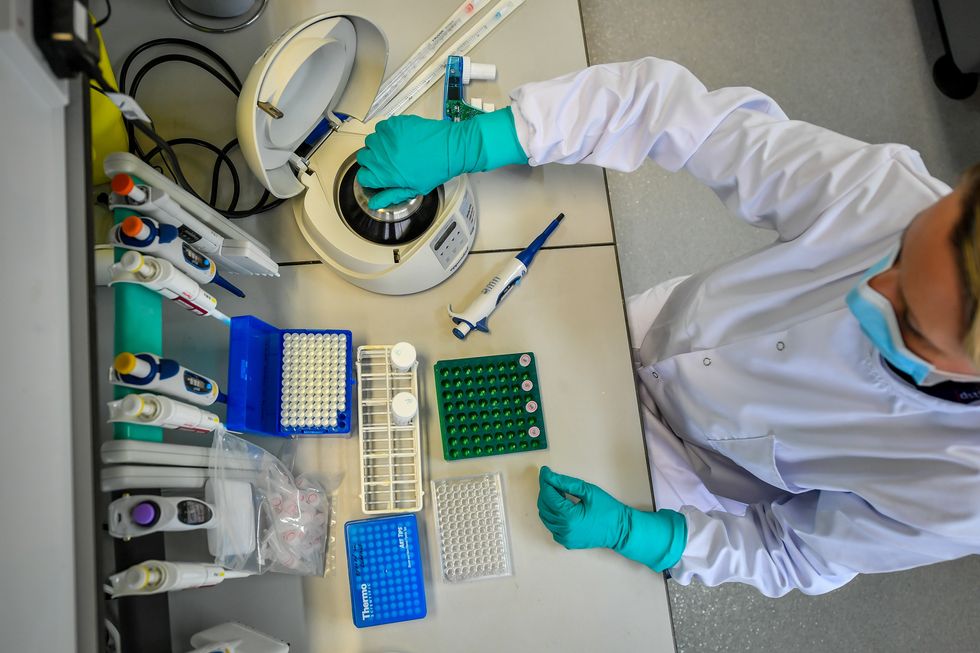
scientific lab
PA
The research could have huge implications for thousands
Don't Miss
Most Read
Trending on GB News
Scientists have observed a major breakthrough after they were able to grow an entity that resembles a human embryo without using a sperm, egg or womb.
Researchers at the Weizmann Institute, a public research university in Israel, made the entity that looks like a textbook example of a real 14-day-old embryo.
The institute was able to create the “embryo model” using stem cells.
Remarkably, the embryo was able to release hormones and as such was able to turn a pregnancy test positive in the lab.

Computer model of the embryo
Weizmann Institute
Scientists at the institute created the embryo models to provide a more ethical way of understanding that crucial stage of early human development.
According to the scientists, this time in development is a major source of miscarriage and birth defects and is currently poorly understood.
“It's a black box and that's not a cliche - our knowledge is very limited,” Professor Jacob Hanna told the BBC.
Research and findings on the subject were published in Nature and describe how the embryo model apes all the main structures that emerge during early embryo development.

Scientist uses a microscope
PA
Professor Hanna said: “This is really a textbook image of a human day-14 embryo.
Adding that their research “hasn't been done before”.
Social media users reacted to the news with surprise and trepidation, with one writing: “Are the days of reproduction in the conventional way numbered?”
Another wrote: “This is mind-blowing! Science never fails to amaze me.

Science lab
PA
“I wonder how this breakthrough could impact fertility research and reproductive technology.”
A third simply said: “That is scary stuff.”
Another added: “Amazing science. Done in an ethical way, it could help thousands.”
One more said: “In the long run, there may not be fusion of sperm and egg for zygote to form.
“In other words, sexual intercourse may no longer be needed for a new life to begin.”
Several others made reference to Aldous Huxley’s dystopian novel Brave New World.
The cells used to create the model embryo are a type of unit called naive stem cells.
These cells were reprogrammed to give them the potential to become any type of cell in the human body.
Chemicals were then used to turn the stem cells into one of four types of cell which are needed for the cells to become an embryo - epiblast cells; trophoblast cells; hypoblast cells; and extraembryonic mesoderm cells.
These cells become the building blocks of human life with the epiblast cells developing into the embryo and trophoblast cells becoming the start of the placenta.
According to the scientists, only around one per cent of the 120 cells used actually began the spontaneous assembly.
They also made clear that the structures created only resemble but are not identical to a human embryo.
Professor Hanna continued: “I give great credit to the cells - you have to bring the right mix and have the right environment and it just takes off.
“That's an amazing phenomenon.”
The researchers also stress that at this stage it would be unethical, illegal and impossible to achieve a pregnancy using the model embryos as the mass of 120 cells would be too big to successfully implant in the lining of the womb.








